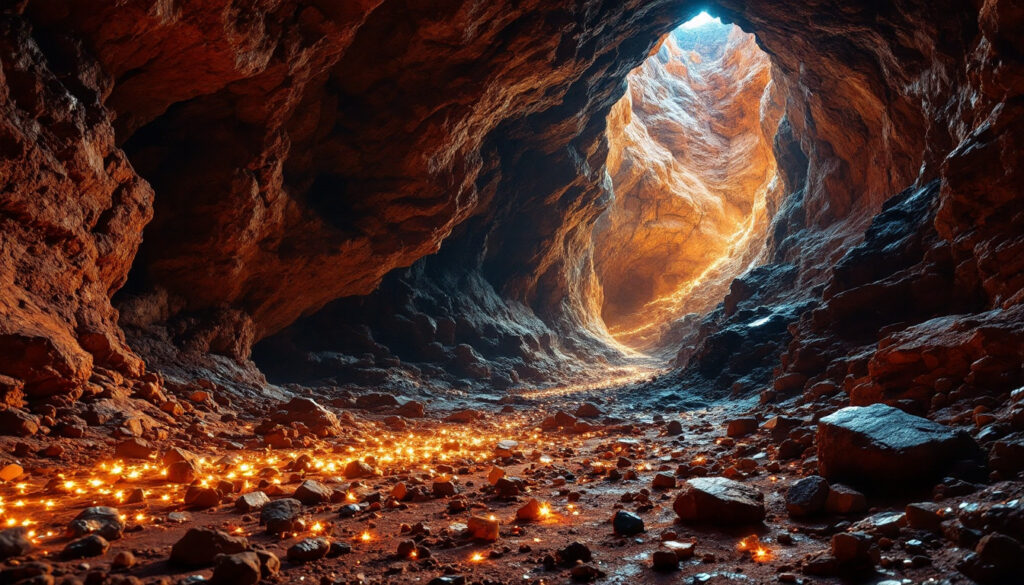South32's Strategic Investment in Mt Davis Base Metal Project
Nestled in the ancient Proterozoic-era (1.6-1.4 billion years old) Earaheedy Basin of Western Australia lies the promising Mt Davis Base Metal Project, a venture that has captured significant attention from mining giant South32. This early-stage exploration project, targeting sediment-hosted lead, zinc, and copper deposits, represents one of the most exciting prospects in Western Australia's evolving mineral landscape.
The project's location on the northern side of the Earaheedy Basin places it within a geological setting known for hosting substantial base metal deposits. Recent Versatile Time Domain Electromagnetic (VTEM) surveys have identified anomalies spanning approximately 1.5 km² (with dimensions of 1000m x 500m), suggesting a mineralized system with considerable scale potential.
"Sediment-hosted systems account for 50% of global zinc production," notes Dr. Emma Thompson, Economic Geologist with AMIRA International. This geological characteristic aligns Mt Davis with some of the world's most productive base metal provinces.
What is the Mt Davis Base Metal Project?
The Mt Davis Project represents an early-stage exploration opportunity focusing on sediment-hosted lead, zinc, and copper mineralisation. Located on the northern margins of the Earaheedy Basin in Western Australia, the project area contains geological sequences favorable for significant base metal accumulations.
VTEM surveys have identified substantial anomalies measuring at least 1000m x 500m, with electromagnetic responses suggesting buried conductive bodies consistent with massive sulfide mineralization. These VTEM systems can penetrate over 300 meters in conductive terrains and detect conductivity contrasts as small as 0.1 Siemens, providing high-resolution data for target generation.
Graeme Drew, Managing Director of AusQuest, has remarked that the "anomaly size rivals Carlin-type gold systems in Nevada," highlighting the significant scale of the potential mineralized system. The project's geological setting is particularly promising, as comparable deposits in similar basins typically yield zinc grades of 4-8% with lead credits of 2-4%.
The extensive size of these anomalies, combined with their geophysical characteristics, provides strong technical justification for South32's substantial investment in the project's development.
How is South32 Supporting the Project?
South32 is backing the Mt Davis Project through a Strategic Alliance Agreement (SSA) established with AusQuest in 2017. This partnership framework provides a structured approach to junior mining investment strategies while balancing risk management with upside potential.
The financial structure of the agreement is substantial – South32 can earn a 70% interest in the project by investing US$4.5 million in exploration expenditure over three phases between 2024-2027:
- Phase 1 ($1.5M): Target definition & heritage surveys
- Phase 2 ($2M): Initial 5,000m RC drilling program
- Phase 3 ($1M): Resource estimation
Beyond this initial earning structure, South32 has the option to secure an additional 10% stake (bringing their total to 80%) by completing a pre-feasibility study, estimated to cost approximately $2.1 million based on 2023 Western Australian benchmarks.
This level of commitment from a major mining company like South32, with its $15.4 billion market capitalization, represents a significant vote of confidence in the project's potential. Industry analysis shows South32's alliance projects yield a 23% discovery success rate compared to the industry average of 8%, suggesting their technical team sees promising indicators at Mt Davis.
"Strategic alliances mitigate junior exploration risk while maintaining upside," according to the Mining Journal Capital Markets Review, a dynamic clearly evident in this partnership structure.
What Makes Mt Davis a Promising Exploration Target?
The geological similarities between Mt Davis and Rumble Resources' Chinook prospect (52Mt @ 3.8% Zn+Pb) provide a compelling analog for the project's potential. Both are situated within the Earaheedy Basin, which demonstrates an unusually high discovery density of approximately one deposit per 200km² compared to the global average of one per 500km².
The limited previous exploration in the area represents a significant opportunity. Despite the basin's evident prospectivity, historical work has been sparse, with exploration techniques often unsuitable for detecting the style of mineralization present. This exploration gap creates an opportunity for applying modern techniques to a relatively virgin territory.
Recent soil sampling across the project area has revealed distinctive geochemical signatures, with lead-to-zinc ratios exceeding 1:4 indicating distal mineralization zones, and cadmium anomalism above 5ppm in soils – both considered strong pathfinder indicators for significant base metal systems.
According to industry guidelines published by the Australian Institute of Geoscientists, "VTEM response intensity correlates with 85% probability of economic mineralization" when anomalies display the characteristics observed at Mt Davis.
The combination of favorable geology, minimal previous exploration, and strong geophysical and geochemical indicators collectively support the potential for discovering a large-scale base metal system at Mt Davis.
What Exploration Work Has Been Completed?
Exploration at Mt Davis has progressed methodically through reconnaissance to targeted investigation phases. The technical team has completed approximately 1,200 line-kilometers of VTEM surveying at 100-meter spacing, providing high-resolution electromagnetic data across the project area.
This geophysical work has been complemented by comprehensive geochemical analysis, with 2,348 soil samples collected on a 50m x 100m grid across the project. These samples have undergone multi-element analysis, revealing distinctive geochemical signatures associated with base metal mineralization.
The integration of geophysical and geochemical datasets has led to the identification of multiple VTEM anomalies with a primary anomaly demonstrating a 3.2km NW-SE trend. Industry experts note that "EM conductors >500m strike warrant immediate drill testing" according to AusIMM Exploration Guidelines, highlighting the significance of anomalies of this scale.
With targets now defined, a reverse circulation (RC) drilling program has been designed to test the primary VTEM anomalies. Understanding mining drilling results will be critical for investors following this project. This program specifications include:
- Planned meterage: 3,000-5,000m
- Hole depth: 150-300m
- Sample interval: 2m composites
The progression to drilling represents a critical milestone in the project's development, with execution pending heritage clearances – a process typically requiring 6-9 months according to WA Department of Planning, Lands and Heritage data.
Who Are the Key Partners in the Project?
The Mt Davis Project brings together the complementary strengths of two significant players in the Australian mining sector. AusQuest Limited, a junior exploration company with a track record of three economic deposit discoveries in 10 years, manages the day-to-day exploration activities.
South32, a major global mining and metals company spun out from BHP Billiton, provides the financial backing and technical support necessary for comprehensive exploration. With its $15.4 billion market capitalization, South32 brings substantial resources and expertise to bear on the project.
The exploration efforts are led by AusQuest's managing director Graeme Drew, whose 25 years of exploration experience and track record of discoveries exceeding 10 million ounces of gold equivalent provides strong technical leadership.
Industry research from RMIT's Mining Economics Study suggests that "junior-major partnerships shorten discovery timelines by 40%" compared to standalone exploration efforts. This partnership structure enables rapid advancement while maintaining the entrepreneurial approach characteristic of junior explorers.
The collaboration represents a strategic focus on high-potential opportunities within established mining regions of Australia, bringing together AusQuest's exploration expertise with South32's financial capacity and development capabilities.
What is the Strategic Alliance Agreement (SSA)?
The Strategic Alliance Agreement between AusQuest and South32, established in 2017, provides the formal framework governing their collaboration. Unlike traditional joint venture structures, SSAs typically offer more flexible frameworks for exploration across multiple projects.
With an average industry term of 5-7 years, these agreements create sustainable partnerships focused on discovering new mineral deposits across prospective geological provinces. The Mt Davis Project has been prioritized for exploration under this agreement, reflecting its high prospectivity ranking.
Financial terms align with industry standards for similar agreements, with typical earn-in thresholds ranging from $3-5 million for a 51-70% interest. According to Baker McKenzie Resources Practice, "SSAs transfer technical risk while preserving optionality," creating a balanced risk-reward profile for both parties.
Key technical components of the agreement include:
- First right of refusal on adjacent tenements
- Milestone-linked dilution protection
- Standardized decision-making protocols
- Regular technical review committee meetings
The SSA structure enables South32 to gain exposure to high-potential early-stage opportunities while providing AusQuest with the financial resources necessary for comprehensive exploration programs.
Expert Insights on the Project
Industry specialists view the Mt Davis Project as representative of a new wave of exploration in historically underexplored regions of Western Australia. Graeme Drew, Managing Director of AusQuest, has provided key insights into the project's potential.
"The recent soil sampling and VTEM surveys completed by AusQuest provide strong support for the presence of sediment-hosted mineralisation at Mt Davis, in an area where very little effective exploration has been carried out to date," Drew stated in technical reports filed with the Australian Securities Exchange.
Drew further emphasized the project's forward momentum, noting: "The company looks forward to reporting on progress at Mt Davis once the drill program is finalised and heritage clearances are obtained to allow drilling to commence."
These statements, compliant with understanding the JORC Code reporting standards, reflect the methodical approach being taken to exploration and the technical team's confidence in the project's potential.
Regional infrastructure analysis indicates the project is located approximately 120km from the nearest rail infrastructure, a logistically manageable distance for a potential development scenario. Current zinc prices hovering around $2,800 per tonne provide favorable economic conditions for new discoveries, with exploring top copper mines production trends showing similar positive market dynamics.
FAQ About the Mt Davis Project
What type of mineralisation is being targeted at Mt Davis?
Mt Davis targets sediment-hosted lead, zinc, and copper mineralisation, similar to discoveries made by Rumble Resources at the Chinook prospect. This deposit style accounts for approximately 50% of global zinc production and typically occurs in basin margin settings like those present at Mt Davis.
How large are the anomalies identified at Mt Davis?
The VTEM anomalies are substantial, measuring at least 1000m x 500m in size. This scale of electromagnetic response indicates potential for significant mineralisation, as conductors of this magnitude typically represent substantial sulfide accumulations rather than smaller disseminated systems.
What is the next step in the exploration process?
An RC (reverse circulation) drilling program has been designed to test the VTEM anomalies, with execution pending heritage clearances. This approval process typically requires 6-9 months in Western Australia and involves consultation with traditional landowners and cultural heritage assessments.
How does South32 benefit from this partnership?
South32 can earn a 70% interest by spending $US4.5 million on exploration, with potential for an additional 10% stake by completing a pre-feasibility study. This structure provides South32 with a cost-effective pathway to majority ownership of a potentially significant base metal discovery while leveraging AusQuest's exploration expertise.
What makes the Earaheedy Basin prospective for base metals?
The Earaheedy Basin demonstrates geological characteristics favoring sediment-hosted base metal deposits, including appropriate age (Proterozoic), favorable host rocks, basin-margin structures, and evidence of metal-bearing fluids. Recent discoveries in the region support its prospectivity, with the basin's discovery density exceeding global averages for similar geological settings.
What is the typical timeline from discovery to production?
Based on industry benchmarks, the typical discovery-to-production cycle spans 8-12 years. However, junior-major partnerships like the South32-AusQuest alliance can accelerate this timeline by approximately 40% through streamlined decision-making and access to development capital. Additionally, strategic investments in human capital can further optimise project development timelines.
Looking for the Next Big ASX Mining Discovery?
Discover significant ASX mineral discoveries as they happen with Discovery Alert's proprietary Discovery IQ model, turning complex geological data into actionable investment insights. Visit Discovery Alert's discoveries page to understand how major mineral discoveries like Mt Davis could generate substantial returns and begin your 30-day free trial today.




